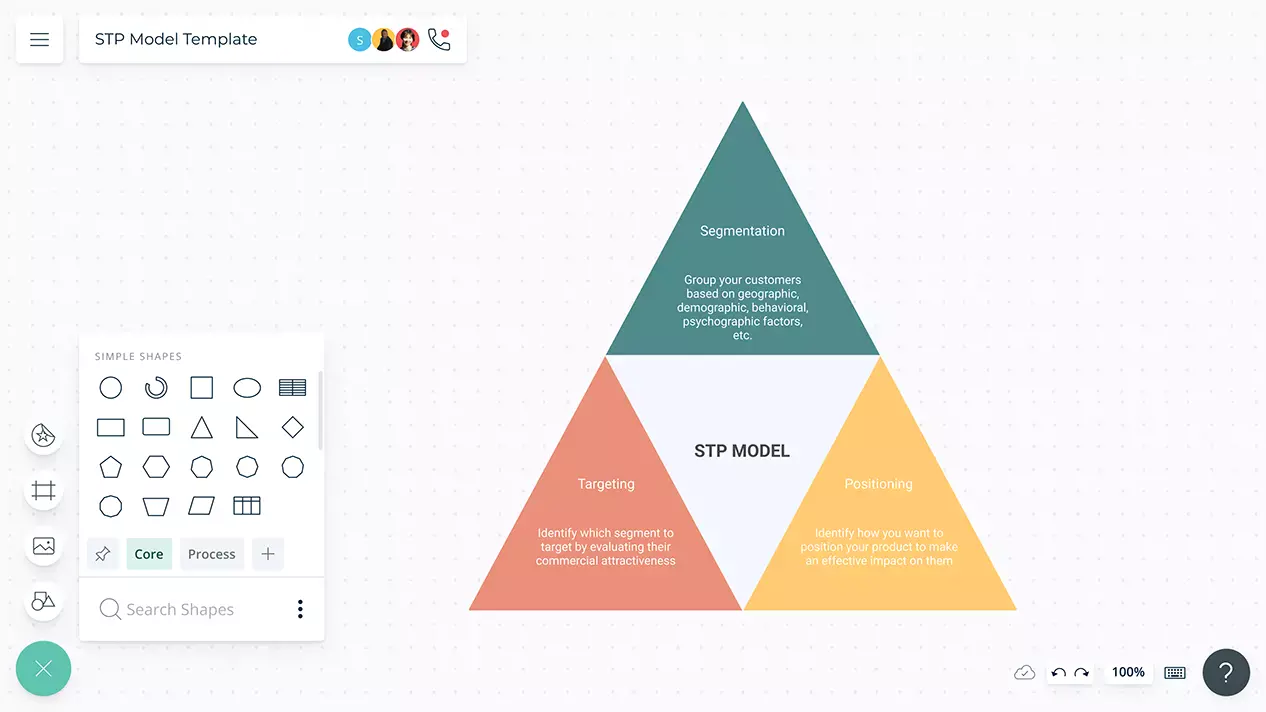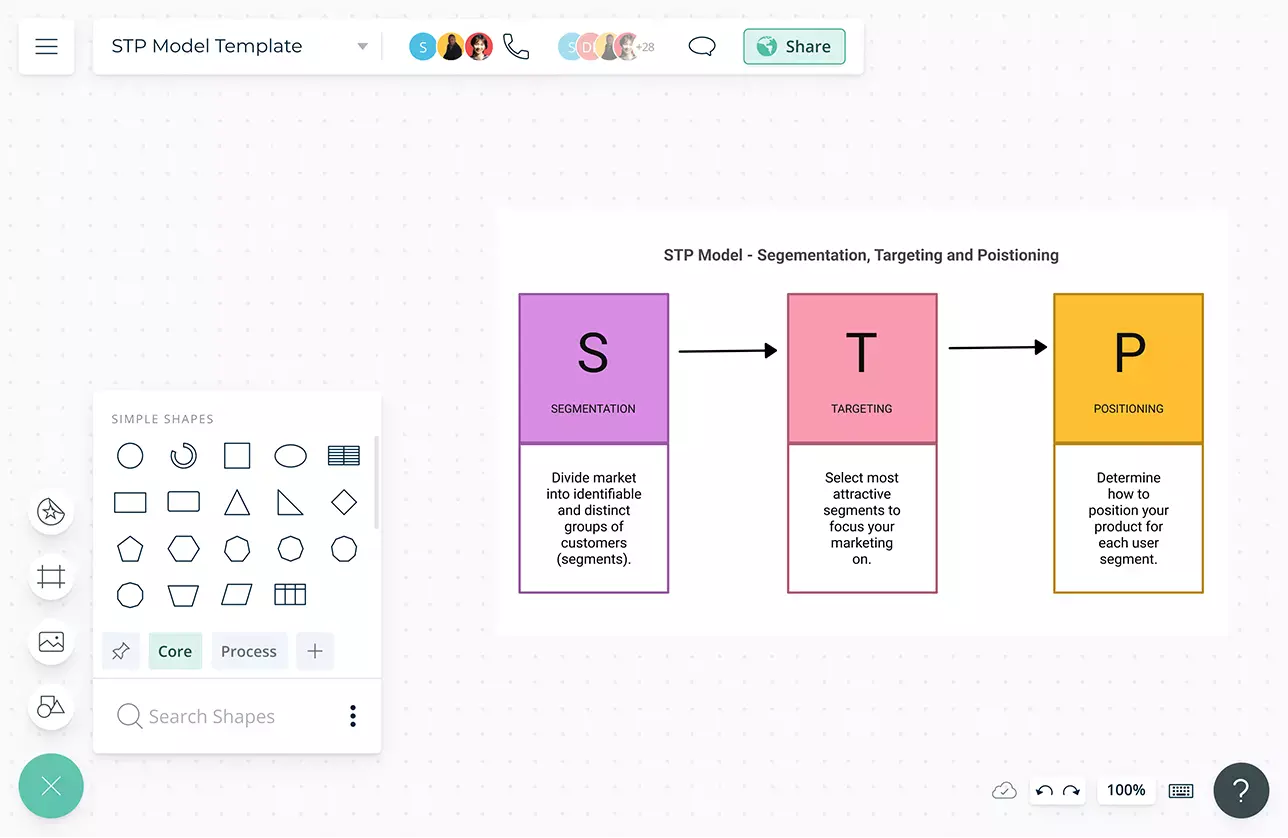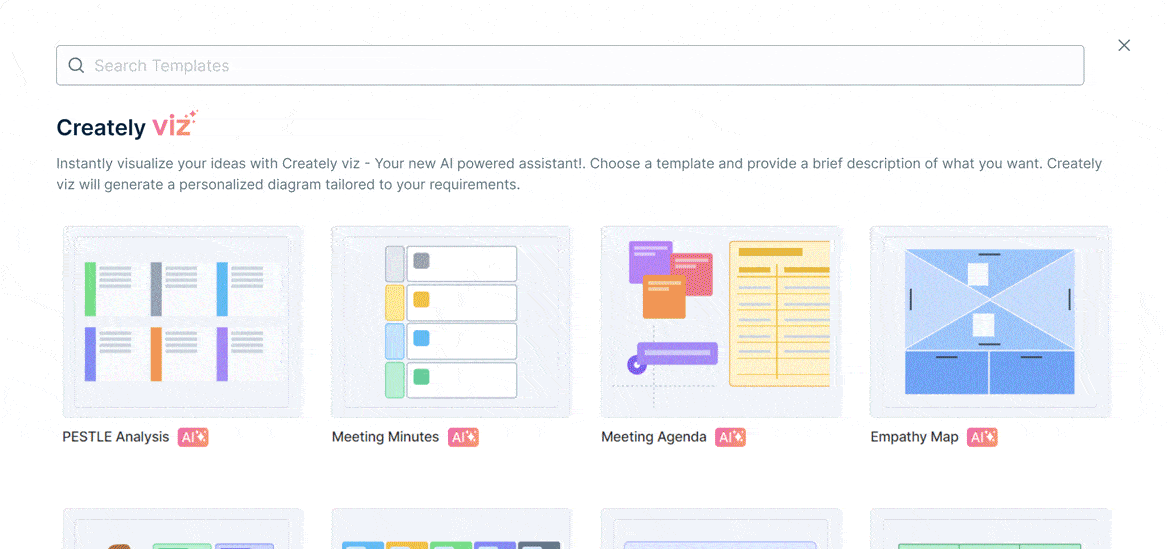STP Model Template
Create Ideal Marketing Campaigns
Collaborate seamlessly on segmenting your market and developing successful marketing campaigns.
- Segment your market visually to implement ideal marketing strategies
- Real-time collaboration to connect with multiple participants
- Two-way integrations to share your marketing campaigns on popular applications

- Segment your market visually to implement ideal marketing strategies
- Real-time collaboration to connect with multiple participants
- Two-way integrations to share your marketing campaigns on popular applications


Brainstorm Ideas to Segment Markets

Multiple frameworks and templates to cohesively capture your business thoughts in positioning your presence in the right market.
Bring data as CSV, Excel files, or spreadsheets from any source to collect and centralize data on a single canvas.
Freehand drawing and highlights to sketch anything you want as you explain ideas and concepts.
A drag-and-drop interface and Plus Create make it easy to visualize any process or question.
Centralize & Organize All Your Information

Infinite canvas to target, segment, and position marketing strategies of different departments and create one source of truth in a single view.
Documentation capabilities to gather information from different sources into one place.
Full-version history to keep track of key points during each iteration of your segmentation or targeting session.
Use frames inside the infinite canvas to generate different pages like layouts, group content, or build a presentation flow.


Collaborate With Your Teams

Video conferencing baked into the platform to feel like you are in the same room.
Multiple access and role levels to streamline sharing, reviewing, and editing your STP model with clients and stakeholders.
Real-time cursors for any number of participants. Collaborate with family members or peer researchers on a shared canvas.
Do More With Your STP Model

Multiple integrations to easily connect with popular platforms like Github, Slack, Google Workspace, Confluence, and more.
Create data-driven STP models by adding custom data fields and properties.
Link to external documents and open them within the canvas for detailed information.
Export as SVGs, PNGs, JPEGs, and PDFs to publish, present, print, or share.



What Is the STP Model?
STP Model:
The STP Model is a strategic marketing framework used by businesses to refine their marketing strategies for greater effectiveness. Here’s a breakdown of each component:
Segmentation: This involves dividing the overall market into distinct groups or segments based on shared characteristics such as demographics, psychographics, behavior, or geographic location. The aim is to identify groups of consumers with similar needs and preferences.
Targeting: After segmentation, businesses select specific segments to focus their marketing efforts on. Targeting involves evaluating the attractiveness of each segment and choosing the ones that align with the company’s goals and resources. By doing so, marketing messages can be tailored to resonate with a more receptive audience.
Positioning: Once the target segments are identified, positioning comes into play. This step involves creating a unique and compelling image for a product or service within the minds of the chosen target audience. The goal is to establish a distinct and desirable place for the offering in the market, emphasizing its unique features and differentiation from competitors.
STP Model Template:
A STP Model Template is a structured document or framework that assists businesses in implementing the STP Model effectively. Such a template typically includes sections for:
Segmentation: Guidelines for identifying and categorizing market segments based on relevant criteria.
Targeting: Criteria and processes for evaluating and selecting target segments that align with the business’s objectives.
Positioning: Strategies for creating a unique and compelling market position, including messaging and differentiation tactics.
These templates serve as practical tools for marketing teams, providing a systematic approach to market analysis and strategy development. They help ensure a more focused and tailored marketing effort, ultimately improving the chances of success in a competitive marketplace.
How to Create a STP Model Template?
Establish Business Objectives and Goals:
Clearly define specific objectives such as increasing market share or successfully launching a new product within a set timeframe.Market Segmentation:
Create distinct sections for each potential market segment, detailing demographic, psychographic, geographic, and behavioral characteristics.Targeting Strategy:
Develop criteria for segment evaluation, prioritizing based on size, growth potential, profitability, and alignment with business resources.Positioning Statement:
Craft unique positioning statements for each target segment, emphasizing value proposition, key differentiators, and desired consumer perception.Implementation and Monitoring:
Outline practical steps, including marketing channels and communication methods, establish a timeline, identify KPIs, and schedule regular reviews for ongoing assessment and adjustments.
How to Use the STP Model with Creately?
- Step one is to segment your market; group your customers based on factors such as geographic, demographic, behavioral, psychographic, etc. By doing so you can identify how to customize your product or marketing message to suit each segment.
- Identify which segment to target by evaluating their commercial attractiveness. You can do this by considering factors such as market size, ease of reach, growth potential, profitability, etc.
- Using a tool like the PEST analysis, you can further dig into the threats and opportunities present in each of these markets.
- Now that you have selected the most valuable market segment, identify how you want to position your product to make an effective impact on them.
- To do so, identify your unique selling proposition (USP), or how what you offer stands out from that of what your competitors offer.
- Once your USP is defined, work with a product positioning map to understand how each of your customer segments perceives your product compared to that of your competitors. At the end of the analysis, you can determine how to position your product ideally.
- Identify the needs of the customer segments and the problems of your customers your product can offer a solution for. This information will allow you to create a value proposition that explains how your product will meet the needs of your customers better than your competitors and develop a marketing strategy to execute it.
